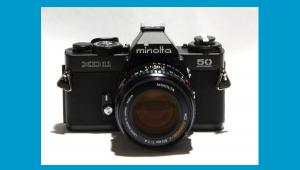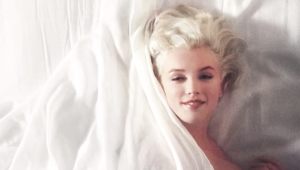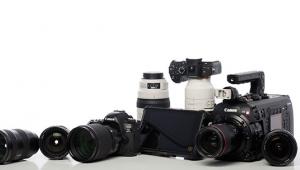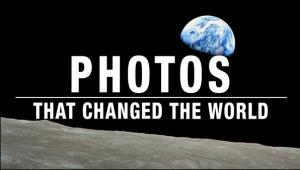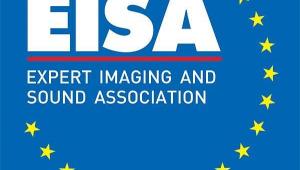Pixelrights Offers Online Photo Portfolios Designed to Protect Your Copyright
![]()
Online photo portfolio services are a dime a dozen these days, but the lads at the London, England-based Pixelrights think they can offer something their competitors don’t: copyright protection for your images. Yes, you read that right. Not only are Pixelrights’ portfolios designed to showcase your online images in a clean, attractive way, they also have several built-in security tools to prevent your photos from being stolen and re-used without attribution, permission, or payment.
After we heard about Pixelrights’ copyright-protected portfolio service, the first thing that popped into our head was: why the heck hasn’t someone thought of this before? The answer, of course, is that it sounds bloody impossible! (To use a British turn of phrase.)
The find out more about Pixelrights and their unique, security-focused technology, which they call a “Smart Frame,” we interviewed the company’s two co-founders: Shaun Curry and Patrick Krupa.
Below is the text from that interview along with several embedded Smart Frames featuring Shaun Curry’s images.
Shutterbug: What is the concept behind Pixelrights?
Shaun Curry, co-founder of Pixelrights: The concept behind Pixelrights is to provide a fair, useful and scalable service for the photographic community that is run by photographers and creatives.
Our aim, both long and short term, is to try and redress the balance so that photographers can start to receive fair treatment for their work.
The idea is to supply photographers with a user interface and experience that is original, incredibly smart and simple to use, making updating or changing your website an enjoyable experience that only takes a couple of minutes. Adding to this is a set of tools that provides new options for image security using technology that no other service of this kind can equal.
When we first began to put Pixelrights together it became very clear, almost instantly, looking at what other web hosting services were doing with image security, that the answer was ‘not much and nothing.’ We found it a bit incredible to be honest, looking at very large established services, some who are funded to the tune millions of dollars and none of them manage to provide any more than a simple right click block. Also, on top of this, their UI and UX were often abysmally complex and frustrating to use. So Patrick, Artur and myself all sat down to see what we could do.
The result was what we now call the 'Smart Frame.’ (See several examples embedded in this story.) This is the main part of our security development: it’s an interactive element that stops right click, save as, drag and drop and source code image retrieval. It also provides constant attribution to the author via its interactive caption and byline box, which grabs the IPTC caption data from the image. It also acts as an advanced type of embed technology, allowing the author to edit the content, watermark and sharing permissions after it has been embedded. Our next concern was to try and address the dreaded screen shot issue, this part took some serious consideration and has probably been the toughest part to develop.
Blocking all screen grabs across all devices is, of course, impossible. By simply putting an image online you can at the very least take a picture of the screen and therefore have a copy of it.
But we reasoned this isn't where it ends. The simple act of taking a screenshot is not illegal in any way shape or form, and will, in our opinion, stay this way. Hardware is the only way of controlling it across the board, and for security reasons this would have to be addressed by the company who produces the hardware itself like Apple, for example. There are, however, some simple alternatives to this that we found were possible using our technology.
Apple provides an app called Grab on some versions of their OS. This app allows the user to screen grab, delayed screen grab and screen record. The interesting part is, when you use the DVD player on your Apple computer, the Grab 'screen recording' app is disabled. It could be argued that this intentional hardware disablement is to stop anyone watching a DVD film and recording it.
If you look up the Anti-Circumvention law, it appears that Apple would be in direct violation of this 'if' they allowed Grab screen recording of a copyrighted DVD.
So we sought legal advice to ascertain if the Pixelrights Smart Frame could be classed as Anti-Circumvention technology, and although we couldn't control the hardware, like Apple we could effectively alter the balance of culpability. This would mean that copyright owners could bring legal proceedings against an infringer who “does anything which circumvents [copy-protection] measures knowing, or with reasonable grounds to know, that they are pursuing that objective.” This law also applies in the U.S. under the Digital Millennium Copyright Act (DMCA).
Once we successfully established this link it became a process of enabling our 'screen shot deterrent' to provide sufficient warning and technical hurdles to ensure that anyone who attempts to remove any content from a Pixelrights website does so knowing that it is copyrighted material. This is enough to enact the Anti-Circumvention law from the UK and the EU 1988 Copyright and Patents Act.
But it was a very hard balance to strike without upsetting the visual continuity of our portfolios.
We achieved this with our Press and Hold feature. This is a customizable, granular option that allows our mouse-over caption byline box to block the center of the image permanently, and invites visitors to press their mouse or finger on a button that says Press and Hold to View Photo. When pressed it removes the box; provided you keep your finger on it!
Also attached to this box are the terms and conditions of the image and also a copyright warning, which is activated by some key based screen shot attempts or print screen.
We included Press and Hold, Full Screen, and watermarking into one section of our website. Any of these settings can be applied to any single or group of pictures and all independently of one another, making it possible to add extra protection to more valuable images or allow Full Screen to some and not others. It’s very, very flexible.
Our aim here is to provide more culpability in the action of any infringement and hopefully make any legal action more decisive. This should then reduce the shadow of doubt that can be thrown over some online copyright cases that can dissuade photographers from pursuing costly legal action. For example, a now famous landmark copyright case, AFP vs Morel, showed AFP using the Twitter terms as one of their many defenses. You could also argue that if Twitter hadn't made it so very easy to obtain images posted on their website and offered some sort of warning then none of this would have happened. And, if it did, it wouldn't have taken three years and nine million dollars to prove AFP's guilt.
There are some serious benefits to our Press and Hold screen shot deterrent system, and becoming a Pixelrights member also includes some free legal help provided by a partnership with Michelmores LLP specialist IP lawyers also based in London. Overall, we have found that the balance achieved so far has been extremely well received and something many people have been waiting for. We continue to improve this using new technology and new techniques of applying it.
Another interesting point regarding the application of our Smart Frame tech, particularly for the U.S. market, is that in March 2014, Getty Images unveiled its iframe embed service. This was, essentially, a very basic embeddable frame that allowed free use, via embedding, from a choice of 35 million images that Getty had in their archives. Getty’s iframe was not received well by the photographic community, and many articles were subsequently written speculating Getty's long term plans for their embed frame and for the company itself. Amongst these was a piece written by U.S.-based pro photojournlist John Harrington, who reported something very interesting about Getty's iframe embed service.
John noted that Getty's iframe changed the law ever so slightly allowing them to negate the need for USCO registration for every image. He reported that "the removal of the iframe and copyright management information (‘CMA’) is a DMCA violation of upwards of $2,500 per infraction, that, wait for it, does not require a copyright registration to be awarded." (17 U.S. Code 1202 - Integrity of copyright management information).
That means the removal of CMA allows the copyright owner access to civil court, (in the U.S.) and does not compel them to enter federal court, which, in turn, requires a valid USCO registration certificate before you can have your day in court. So the technology behind the iframe that has allowed any copyright infringement case to be heard in a non Federal Court also applies to the Pixelrights Smart Frame. We are certainly interested in exploring this possibility with the U.S. market and will be looking for legal representatives to assist us.
SB: Explain, as much as you can, how your technology works to protect copyrighted images in Pixelrights portfolios.
Patrick Krupa, co-founder of Pixelrights: When we started our security research over a year ago, we looked into different ideas: steganography, reverse image search, internet protocol address tracking, even some more radical techniques. But for the balance of a completely usable portfolio website, most of these were either too obstructive or didn't do anything to stop the image being removed in the first place.
The majority of images you find online are not protected at all. Some have, at the least, attribution but those unfortunate images that get uploaded to Facebook, Twitter etc. have their metadata stripped, rendering them completely without attribution, so you have a great image – thats why it was shared! – being shared by tens of millions of Internet users who simply do not have a clue about the legality of copying images from websites without permission.
Copied, downloaded, hotlinked without any limitations; most are JPEG format which is supported by pretty much all devices and programs and is very easy to copy and distribute. When the Smart Frame is displayed, it checks permissions and settings with the master server, making sure it's allowed to display the image in the first place. It knows the viewport size, recognizes retina displays and requests the image in a specific size. All I can say is that an encrypted stream of pixels is transmitted to the Internet browser, assembling the image on the fly and rendering it on a blank canvas. The result cannot be saved as a JPEG, which completely eliminates right-click and save, drag and drop, exploring the html source, saving the webpage as a file, hotlinking or downloading by any web spider or search engine.
Complete separation of the high-resolution image and the JPEG thumbnail gives us a perfect opportunity to serve the pesky web spider with whatever flavor thumbnail we like. Web spiders and social networks only allow JPEG format, So, we output a completely custom thumbnail with a big watermark over several tiles or we don't output any thumbnail at all.
So, how good is our protection? Reverse engineering the Smart Frame technology and extracting a clean high-resolution image from it would be extremely difficult. We don’t claim our protection is 100%, just like no door lock or car alarm is 100% safe. What is important is that currently we offer the most advanced protection on the market and working together with other organizations and copyright lawyers, we strive to become an ambassador for professional photographers, supporting their rights and protecting their interests, where others fall far short of the mark.
SB: Can you give us an idea of how many users you currently have?
Shaun Curry: We have a few hundred users currently with very good take up each week. Its always a nice surprise to come across new accounts and new photographers sharing their work online, and also the sackload of emails we get thanking us for building Pixelrights. This gets me up in the morning.
SB: It seems you’re mostly Europe-based, for the moment. Do you have plans to expand into the North American market?
Shaun Curry: Yes we are based in London's Camden Town, near the underground! I think its very early days right now, but we love the U.S. Co-founder Patrick often travels over to New York.
From our point of view, it seems that most exciting tech start-ups are U.S. based, often in the infamous Silicon Valley. The U.K. tried to copy this with a rather embarrassing version called the Silicon Round-about, a very small set of streets in North London. Not that I am binning it! It’s just the U.S. works in an entirely different way to the U.K., geographically and financially, and I'd much prefer us to just do it our own way. It’s a bit like the engineers of yesteryear who built championship winning racing cars in a shed at the bottom of their gardens. So yes, I think we'd love to expand overseas.
SB: What other features do you hope to add?
Shaun Curry: There are many, probably hundreds of features we could add, but I can tell you now that’s not where we are heading. We want to keep the balance right, having a three-foot long list of features only adds weight and complexity to the service. That’s just not needed, of course. We'll have more than we do now, but always in a very well designed, thoughtful, innovative and useful manner.
There is simply no need for us to become another Photoshelter or Zenfolio. They are ten a-penny and very little distinguishes them apart from one another.
We have to be a bit secretive with some of our ideas when we talk openly like this, but I can tell you that yet again what we have planned is not being done on any service of this kind, and when added to what we have already it is going to provide a very powerful website for our members.
SB: What’s next for your company?
Shaun Curry: I cannot stand the thought of just blending into the faceless malaise of web hosting services, all promising fantastic portfolios. That makes me shudder. Having been a photojournalist at Agence France-Presse, Financial Times, amongst others, I'd like to believe that I have some idea of what photography is about, both in a professional practical and also in a more aesthetic sense, as with Patrick he also has vast experience running digital services and web development agencies. Artur too, our Head Developer, is a code and math genius! This provides us with an amazing and diverse set of contacts, tools and experience to draw from. It has been extremely hard but a very progressive and positive experience building the Pixelrights site. We designed and questioned every aspect ourselves. We have brought it out of the dark, as it were, and into the light. It’s now a functioning popular product. This make me, and I dare say, Patrick and Artur all very proud.
We are now starting to talk with investors; this is the next big step we have to take. I wish we could carry on funding it ourselves, but practically speaking this isn't possible when we have to achieve these large goals, that if we make it happen has the potential to create an eco system that puts the power back with photographers. Exciting stuff!
(For more info on Pixerights, visit their website: www.pixelrights.com)
- Log in or register to post comments
